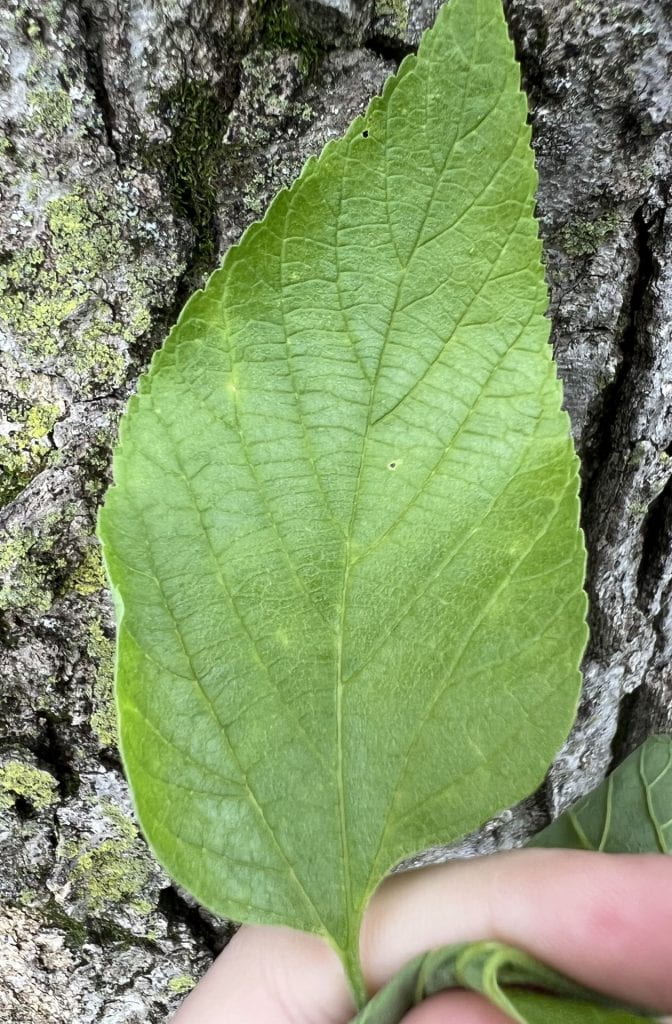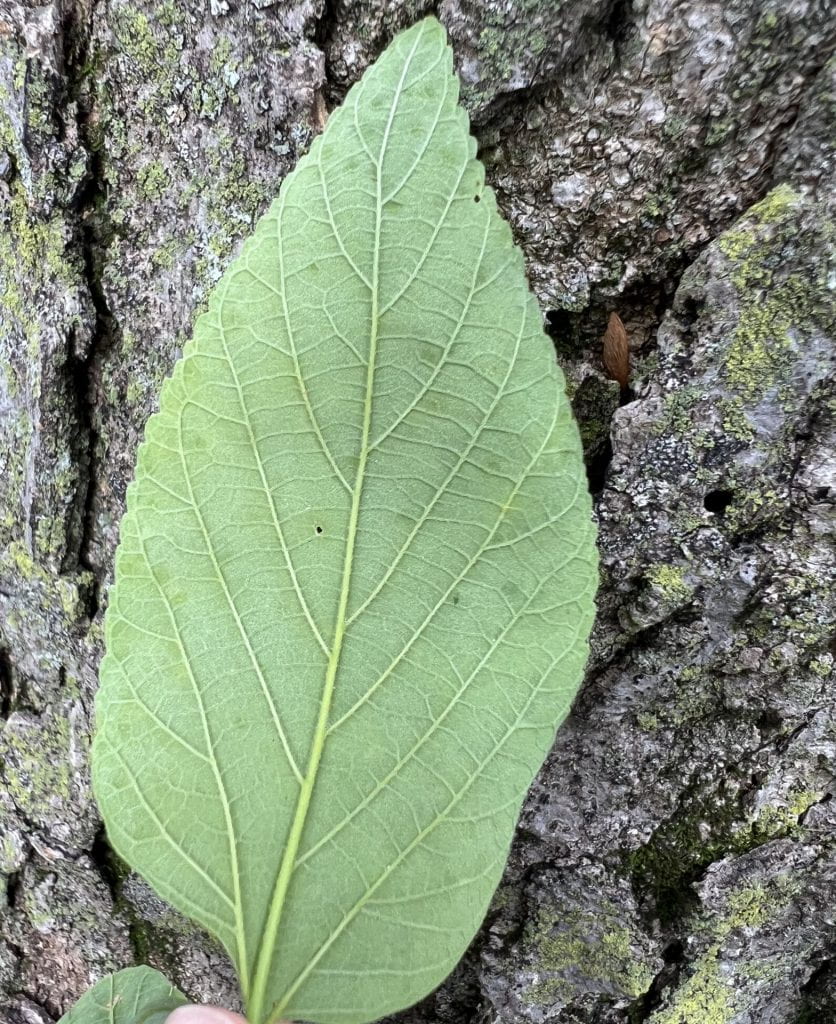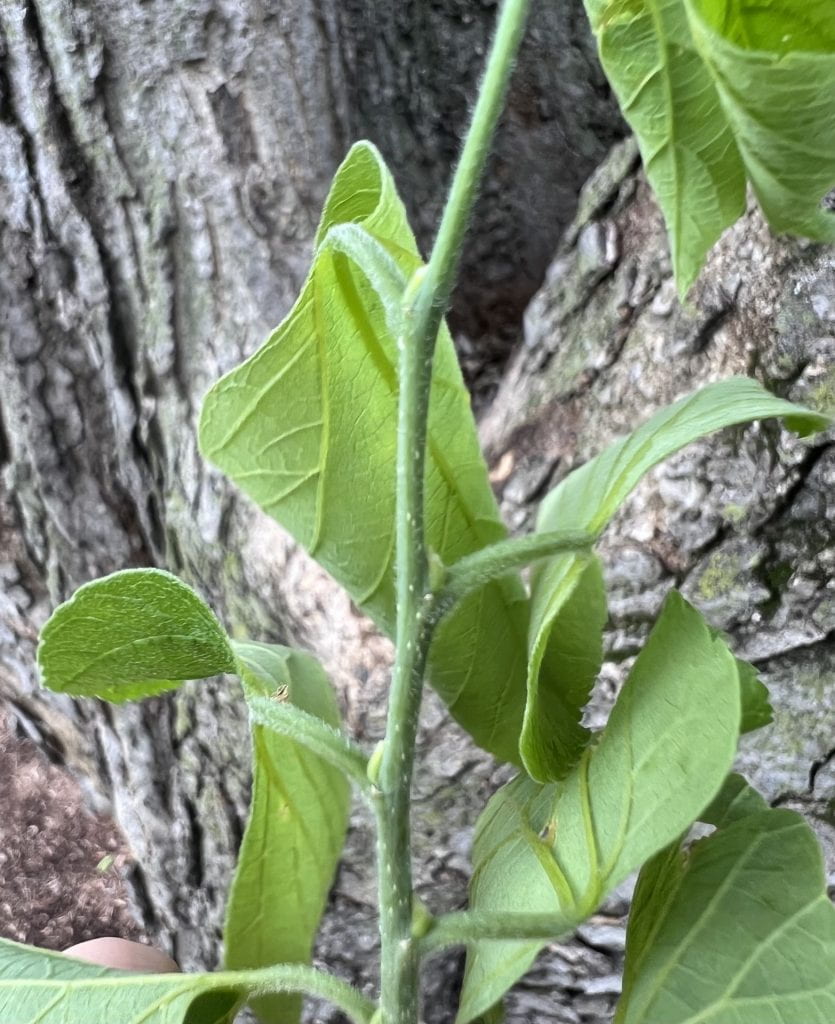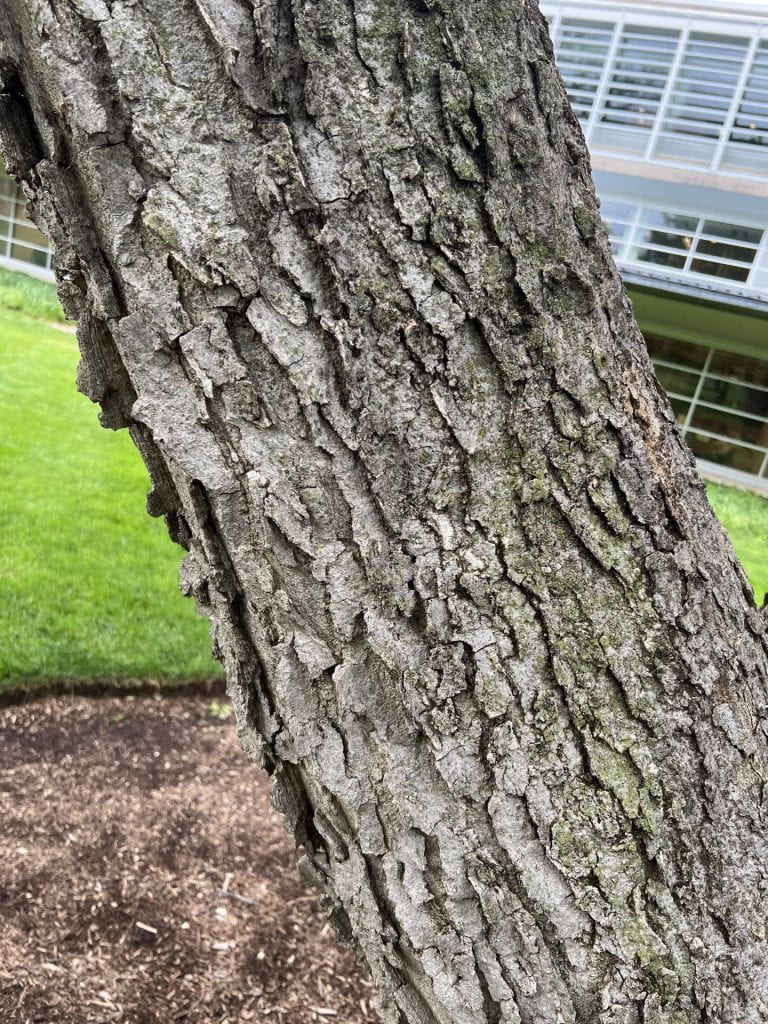Leaf Identification
The leaves of the Sugarberry are ovate shaped, and the venation is pinnate. They can have entire margins or be serrated on the upper half of the leaf. Typically about 2″ to 5″ long, the leaves have an acuminate tip and an uneven base. They can be slightly pubescent, but are mostly smooth. They are usually a light green color but turn yellow in the fall. The leaves are alternately arranged on the stem.
Twig and Bud Identification
The twig of the Sugarberry is typically zig zag, reddish-brown, and have lighter lenticels (pores). The buds tend to be appressed, triangular, and tan. It lacks a true terminal bud, but it does have a pseudoterminal bud. The pith is chambered at the nodes.
Bark Identification
The Sugarberry has distinctive corky bark. The corks are usually spread out and are ringed protrusions. The bark is light brown-gray in color.
Fruit Identification
The fruit of the Sugarberry are round drupes that each contain one seed. It is green, then orangish-red, and finally dark purple at maturity. They are edible. The fruits ripen in the fall.
Flower Identification
The Sugarberry’s flowers are very small, usually only about 1/8″ long. They are light green and are produced on stalks at the leaf axils. They can produce perfect (male and female in the same flower) flowers, but if not, male flowers are in clusters while female flowers are solitary. The flowers bloom throughout the summer.




